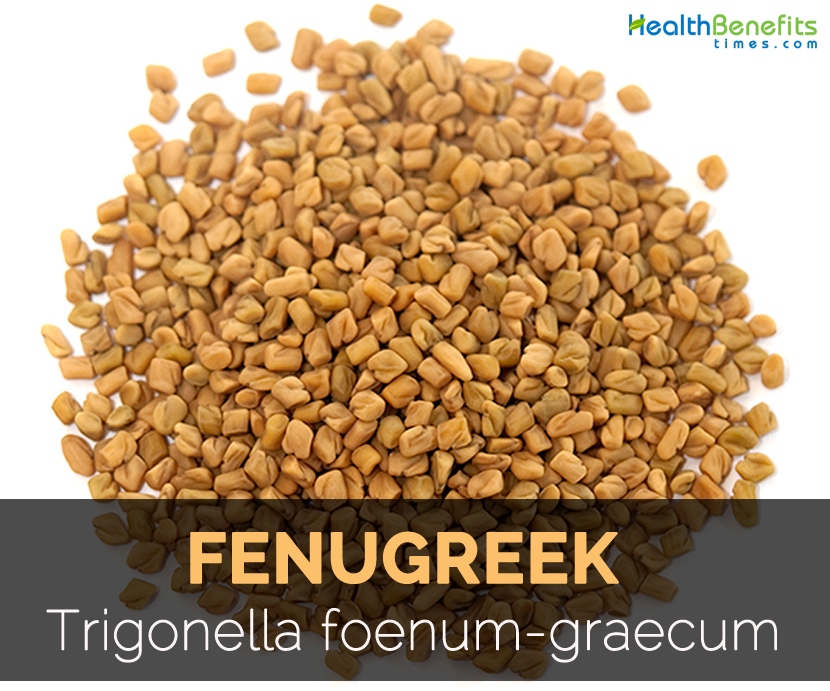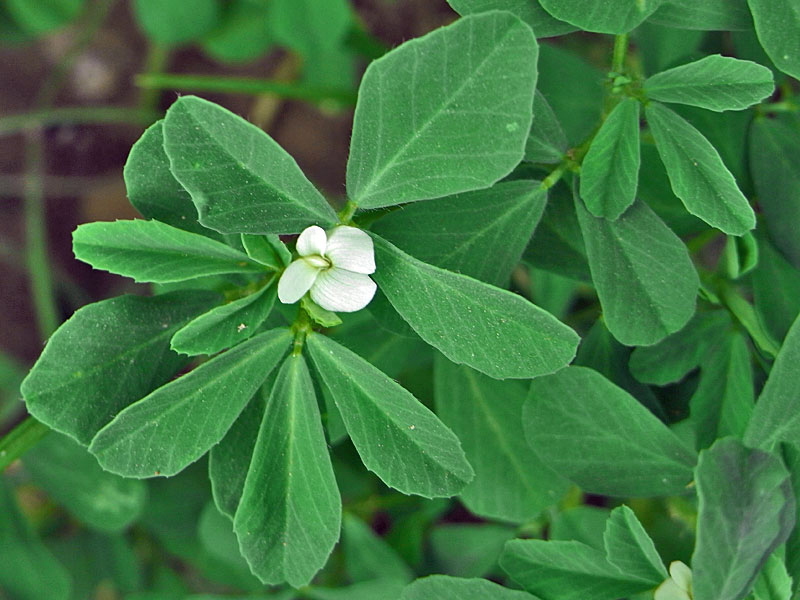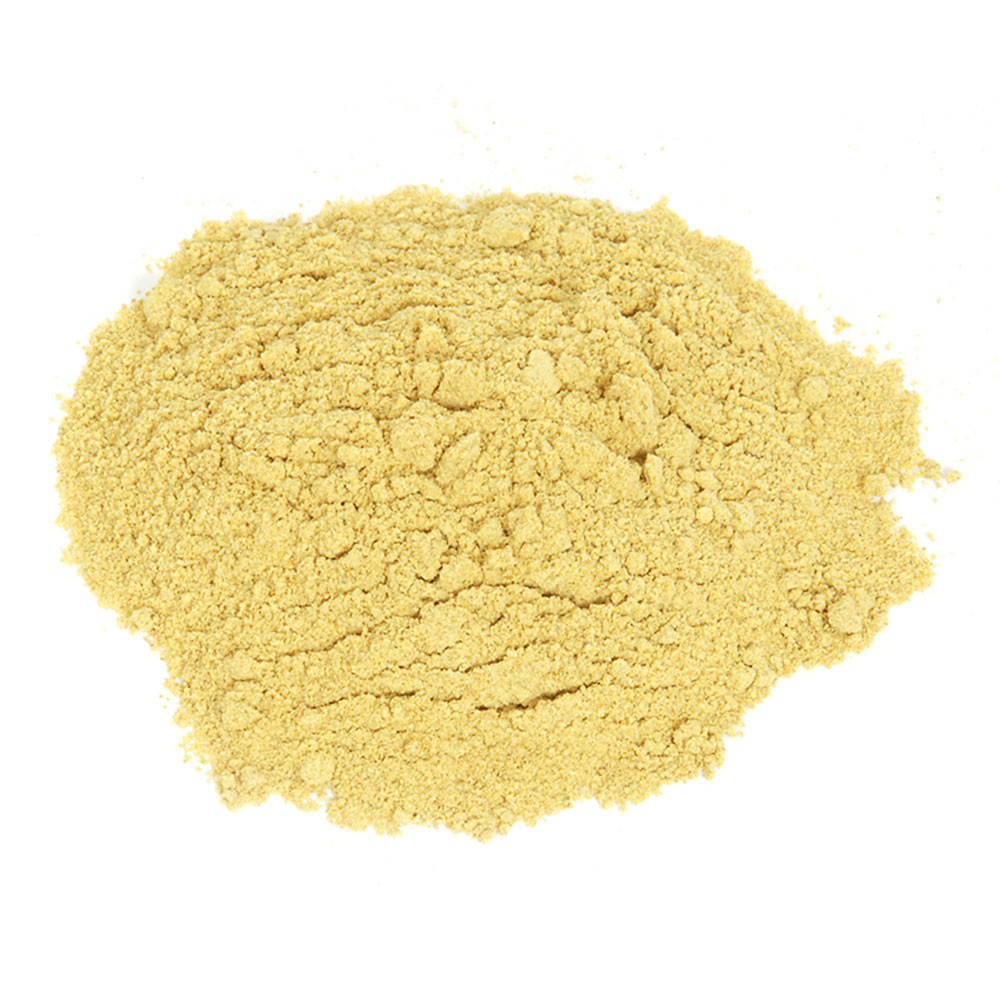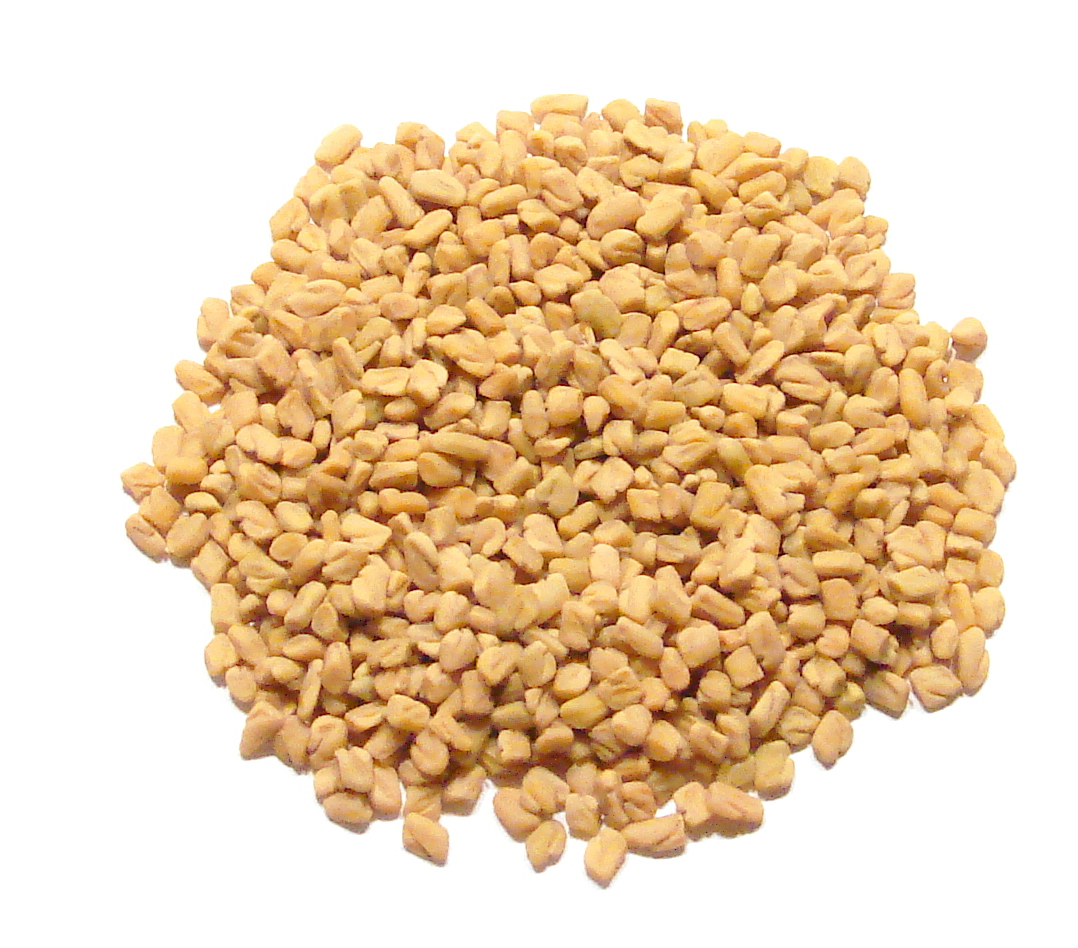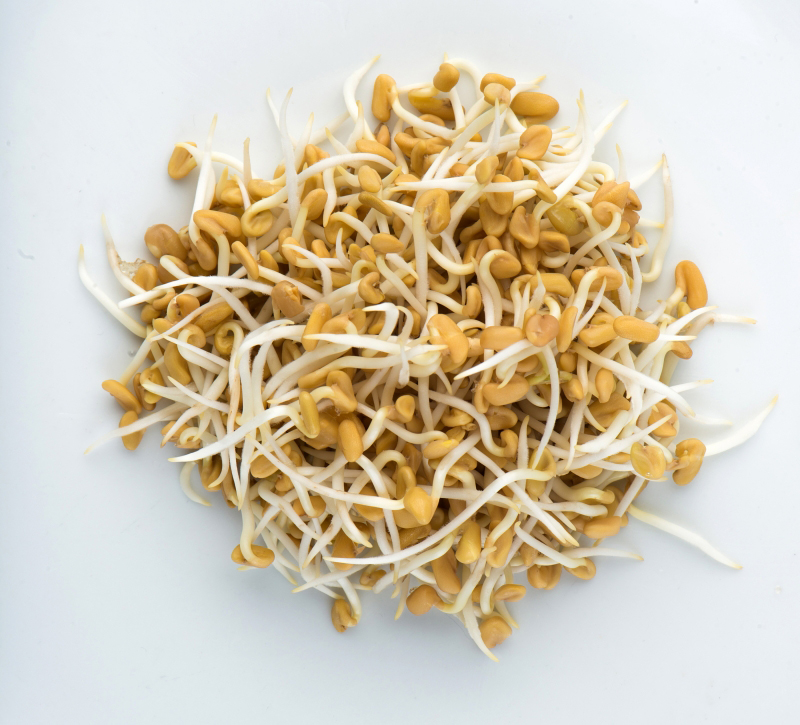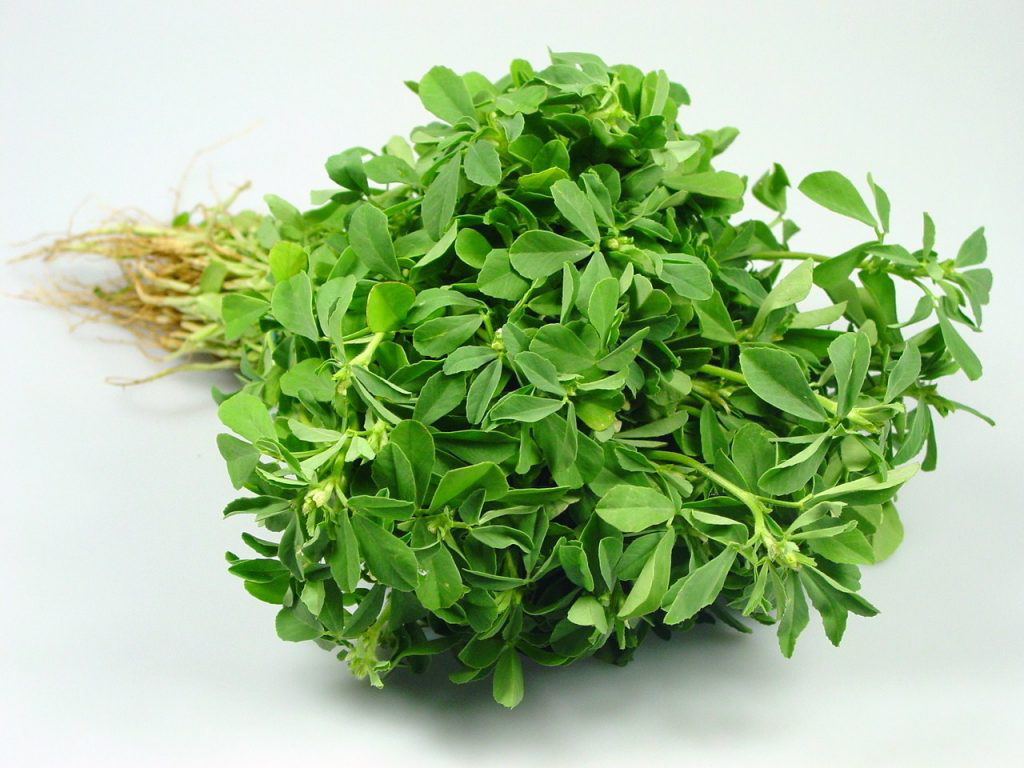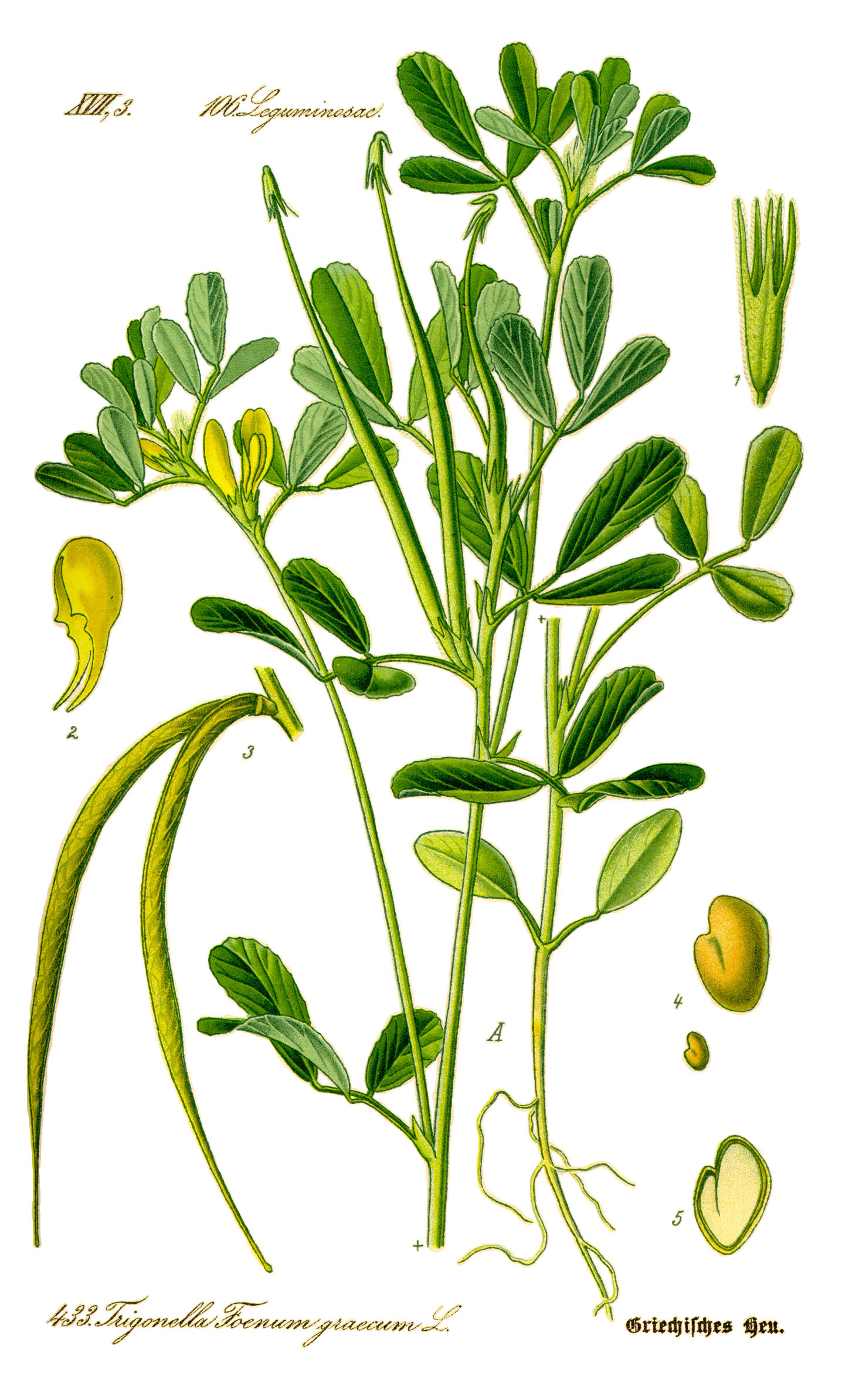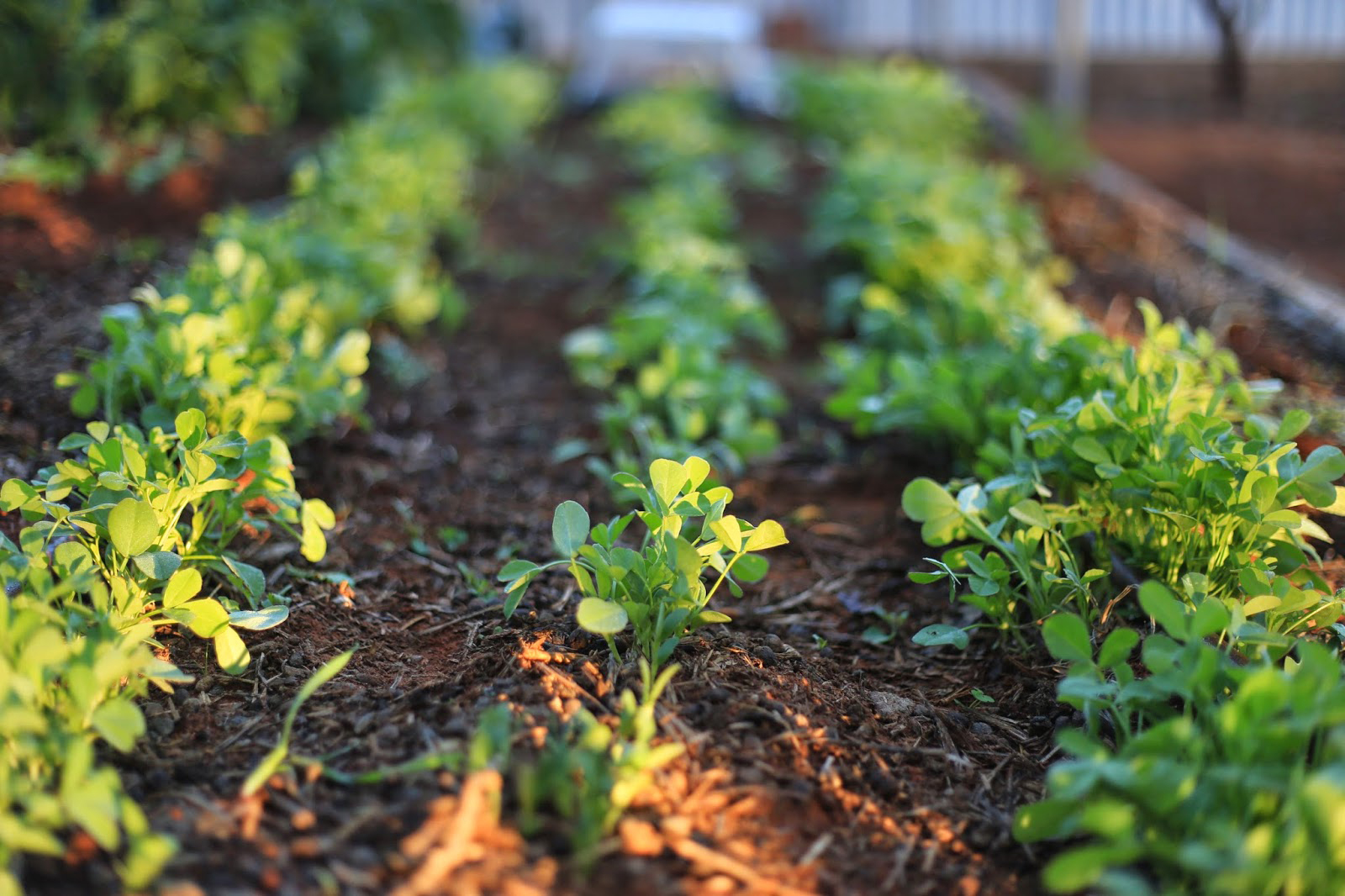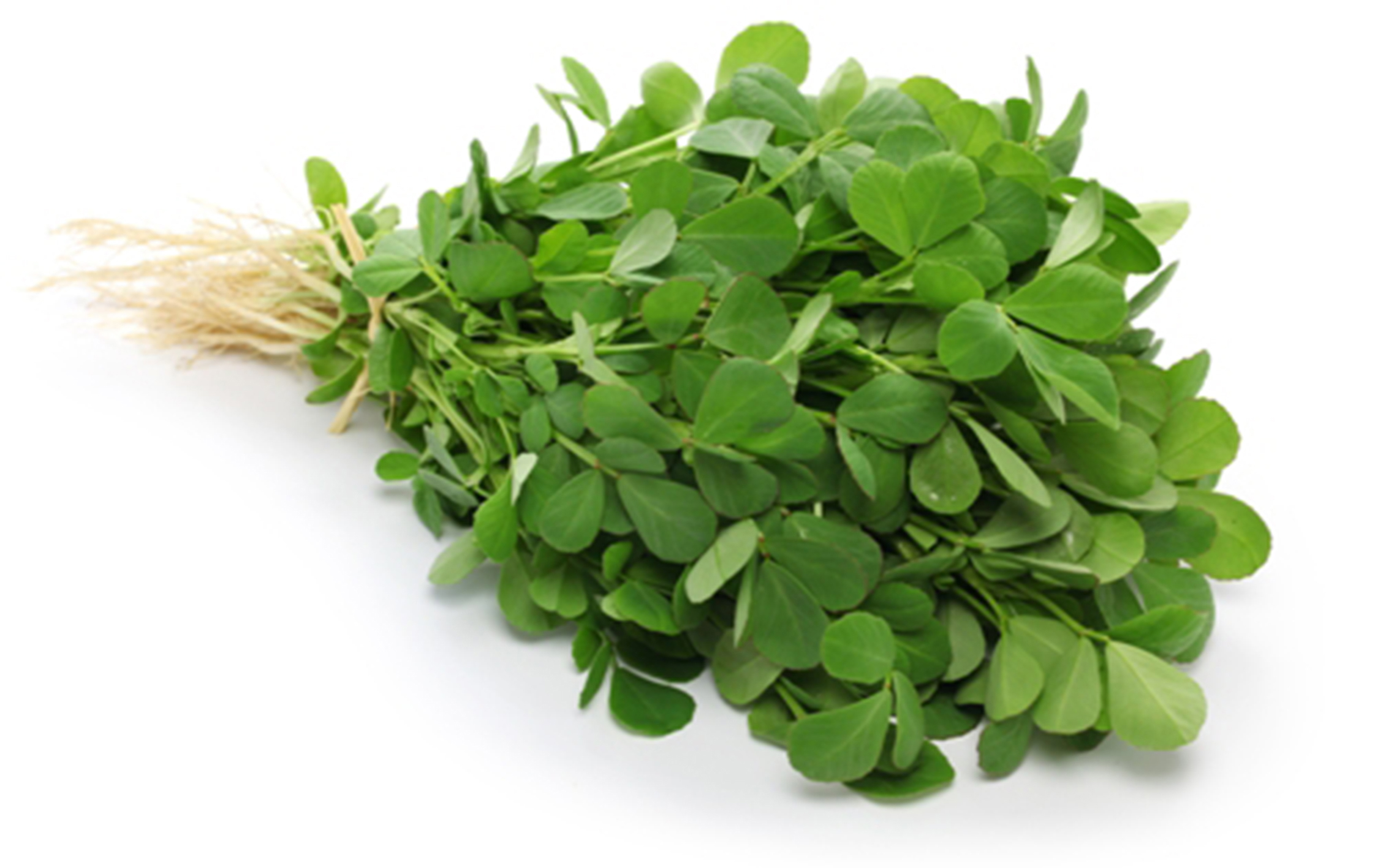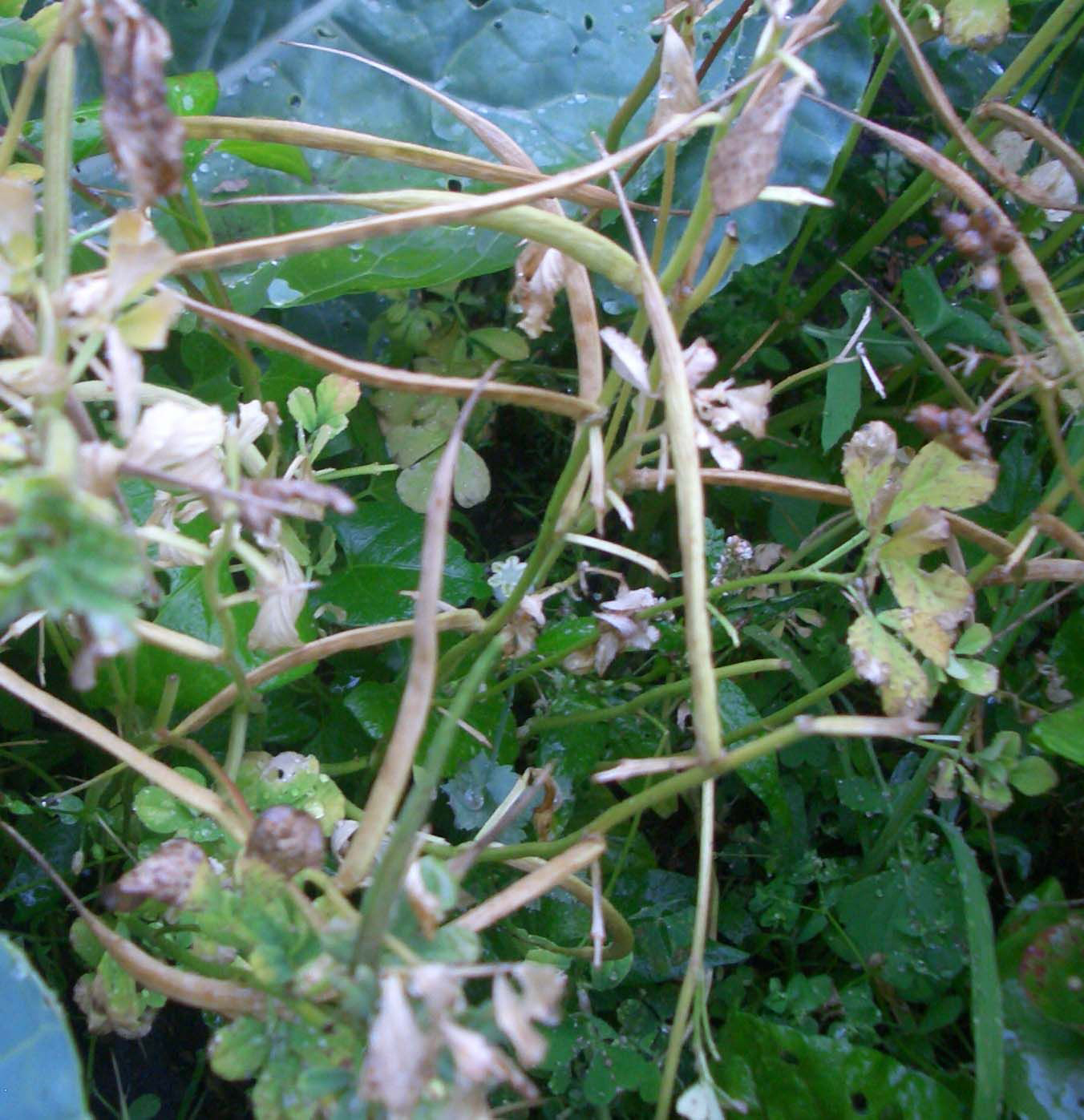| Fenugreek Quick Facts |
| Name: |
Fenugreek |
| Scientific Name: |
Trigonella foenum-graecum |
| Origin |
Fenugreek was cultivated in Near East. Pakistan, Afghanistan, Nepal, Iran, India, Argentina, Bangladesh, Egypt, Spain, France, Morocco and Turkey are the countries that produce fenugreek in major. |
| Shapes |
2.5-10 cm long, 0.5-1 cm wide, erect, linear, leaning |
| Taste |
Bitter |
| Calories |
36 Kcal./cup |
| Major nutrients |
Iron (46.50%)
Copper (13.67%)
Tryptophan (9.77%)
Isoleucine (8.25%)
Total dietary Fiber (7.11%)
|
| Health benefits |
Cure diabetes, Boost male fertility, Resistance of insulin, Prevention of cancer, Helpful for nursing mothers |
Fenugreek is the oldest and useful herb that is known to humans many years ago. Archaeologists recorded that fenugreek was known around 4000 BC and was discovered in Tell Halal of Iraq. It is known that fenugreek was used to prepared kuphi and also consumed by ancient Egyptians. The term fenugreek was derived from the latin name Trigonella foenum graecum meaning Greek hay. Other common names of Fenugreek are Premium Fenugreek Seed, Sicklefruit fenugreek, Bird’s Foot, Alholva, Bockshornsame, Bockshornklee, Chandrika, Egypt Fenugreek, Fenugrec, Fenogreco, Foenugraeci Semen, Foenugreek, Greek Hay, Greek Clover, Hu Lu Ba, Greek Hay Seed, Medhika, Methika, Methi, Trigonella foenum-graecum, Trigonella Trigonella Foenum, Woo Lu Bar and Trigonelle.
Fenugreek is the herbaceous, annual and hardy plant that is inherent to Indian subcontinent and Southeastern Europe. The plant of fenugreek bears yellow or white tiny and aromatic flowers during late summer. Flower turns into long and thin seed pods that possess about ten yellow to brownish seeds. The fragrant aroma resembles clover. The seeds possess potassium, protein, niacin, Vitamin C and diosgenin which is a compound that possess the properties common to estrogen. Fenugreeks also contain other active elements such as lysine, alkaloids, L-tryptophan and steroid saponins such as yamogenin, diosgenin, neotigogenin and tigogenin.
History
Fenugreek was cultivated in the Near East. Hopf and Zohary are unclear that which wild strain of Trigonella genus raises the domestication of fenugreek. The charred seeds of fenugreek renewed from Tell Halal, Iraq and Bronze Age levels of Lachish and devitalize seeds from tomb of Tutankhamen. Fenugreek was listed by vetch and clover as the crop which is grown in order to feed cattle. Fenugreek was cultivated as a food staple in the first century AD as it was mentioned by Josephus in the book named Wars of the Jews. Mishnah a compendium of Jewish oral law has mentioned the plant as tiltan under Hebrew name.
Plant
Fenugreek is an erect, hairy and annual plant that reaches from 10-50 cm high. It has long and slender stems which bear toothed, tripartite, grey to green obocate leaves. It has fingery structure roots. It possesses white or pale yellow axillary flowers. The pods have a curved beak like tip that possess 10 to 20 seeds. The plant has spicy odour that remains on hand after touching. It prefers mild Mediterranean climate. The plant matures on four months.
Flower and Fruit
Flowers are 0.8-1.8 cm long, solitary or in pairs and is sessile. The membranous calyx tube is longer in comparison to lanceolate tips. It has pale yellow corolla that could be darker or violet and measures double in the length of calyx. Wings measure half as long as standard. Longer than calyx, carina is round and obtuse.
Fruit
The plant produces a pod as fruit which is about 0.5-1 cm wide, 2.5-10 cm long and is linear, erect, leaning and appressed pubescent having a long lip. The pod possess about 4 to 20 flattened seeds which are yellow to brown or brown to red, ovate to di-shaped and deep groove.
Leaves, root and stem
This plant has long and vertical taproot. The branched stems are erect or decumbent, round and sturdy. Trifoliate leaves have 0.5-2 cm long petioles. It has obovate to oblong to lanceolate leaflets which measures 1 to 3 cm long and is rounded to obtusely deltoid. The large and membranous stipules are acute, ovate and softly pubescent.
Health Benefits of Fenugreek
Fenugreek also known as Methi in Hindi, has its botanical name as Trigonella Foenum-Graecum. It plays a vital role in Indian spices which is used to enhance the taste of food and also prevents various health problems. It prevents cramps, intestinal gas, bloating, flatulence, cancer, diabetes, indigestion, arthritis, high blood pressure and liver toxicity. It is also able to lower toxins from blood. The seeds possess bitter taste. It is a great source of selenium which assists body in utilization of oxygen. The presence of mucilagins helps to soothe as well as relax inflamed tissues. These seeds also contain alkaloids such as gentianine, trigonelline and carpaine compounds. It increases the number of insulin resceptors in RBCs and promote the utilization of glucose in peripheral tissues.
- Cure diabetes
The seeds of fenugreek possess fiber as well as other chemicals that slow digestion as well as body’s absorption of sugar and carbohydrates. It improves utilization of sugar and raises the release of insulin by the body. The study shows that the regular intake of 10 grams of Fenugreek seeds which is soaked in hot water helps to manage type 2 diabetes. If consumed bread made with fenugreek lowers resistance of insulin in type 2 diabetic patients. In addition to it, the high intake of fenugreek improves glucose level in plasma. (1)
- Boost male fertility
The study shows that the men who took 500 mg of fenugreek extract regularly have experienced in increase in testosterone levels, fat loss, and strength in comparison to placebo. Another study shows that intake of 600 mg of fenugreek seed extract for about six weeks promote sexual performance, improvement in libido and strength. The supplements help to increase level of testosterone levels significantly. (2)
- Resistance of insulin
Metabolic syndrome is related to insulin resistance. Elevation of plasma free fatty acids, and decrease in adiponectin level is related to insulin resistance in obesity. The study was made on the evaluation of trigonella foenum graecum effect on the insulin sensitivity in the high fructose fed insulin resistant rats. (3)
- Lower metabolic and inflammatory alternation
The study shows that fenugreek corrects inflammatory and metabolic alternations related with ovariectomy and also has potential to manage menopause. (4)
- Prevention of cancer
Cancer is the complex genetic diseases of aged cells. Chemoprevention means to use synthetic and natural compounds while in the early stage of cancer. The diet rich in milieu of phytochemicals possess health protective effects. Spices and herbs which possess phytochemicals possess cancer preventive activities. In the study, fenugreek seed extract was provided at post-initiational, pre-initiational, promotional and throughout the experiment with 12-O-tetradecanoylphorbol-13-acetate TPA treatment ad 7,12-dimethylbenz [a] anthracene DMBA in mice. The treated group has low papillomas in DMBA + TPA + TFGS (400 mg/kg. body wt.). It lowers the chances of tumor incidence. Additionally, reduction in cumulative number of papillomas, tumor burden and tumor was found. (5)
- Helpful for nursing mothers
Fenugreek is prescribed by Ayurvedic physicians to nursing mothers as it possess diosgenin that promotes amount of milk in breasts. It contains vitamin and magnesium which enhance the quality of milk that makes the infant healthy.
- Menstrual problems
Fenugreek helps to ease menstruation process and provides relief from the symptoms related to mensturation. It acts as emenagogue that assist obstructed menses and makes the process work comfortably and smoothly.
- Reduce cholesterol level
The study shows that intake of fenugreek lowers the level of low density Lipoprotein (LDL) considerably that prevents the chances of heart attacks, atherosclerosis and strokes. Due to high content of fiber, it eliminates excess cholesterol in blood vessels and arteries of the body. As it lowers the content of cholesterol in bloodstream, it lowers the formation of clot in vessels.
- Gastrointestinal health
Fenugreek is helpful in treating inflammation, wounds and gastrointestinal problems. Due to the presence of antioxidant properties, it counteracts free radicals. It is used in Chinese and Ayurvedic medicine to induce labor and assist digestion. It also promotes the overall metabolism of the body. This also soothes the irritated skin conditions if used externally. In addition to it also provides relief from muscle aches and fevers.
https://www.youtube.com/watch?v=ByckCjwTKqQ
Fenugreek Seeds for Skin:
Fenugreek is known as Asian beauty secret to obtain beautiful skin. It possess germ killing as well as anti-inflammatory properties. The methi seeds act as an effective external cure for dealing with various skin-related problems.
1. Cure for Skin Inflammation
It is used as an aid for skin inflammation. It is useful for boils, eczema, abscesses, muscle pain, burns and gout among other issues. It lowers inflammatory pain and swelling if used as a poultice.
2. Cure for Acne/Blackheads and Wrinkles
Add honey to the paste and like a face mask on the skin for dealing with acne. It is effective for cystic acne too. It is also used for eliminating blackheads and wrinkles. It eliminates harmful toxins that are gathered beneath epidermis and also tones outer layers of skin.
3. Anti-Ageing Remedy
Fenugreek also acts as an anti-ageing treatment. It counteracts free-radicals in the body, repairs damaged skin cells and also regenerates new ones. These helps to lower signs and symptoms of ageing such as wrinkles, facial lines, age spots and spots.
4. Exfoliates Skin
Fenugreek could be used as an skin exfoliator. It exfoliates the face and disclose gorgeous skin.
5. Lightens Skin
Fenugreek also effectively lightens up complexion. It is also used to treat dark circles on eyes.
6. Prevents Sun Damage
Fenugreek safeguards the skin from sun-damage. The use of fenugreek prevents the damage caused due to the sun exposure.
7. Treats Blemishes
Blemishes are annoying which makes the face look unappealing. Fenugreek is a perfect solution for removing skin blemishes.
Fenugreek Seeds for Hair Growth
Along with the use on face, Methi seeds are effective towards dandruff, hair fall, dandruff and prevent baldness and hair thinning. Add it to the daily diet or apply directly as a paste on the hair. Fenugreek is a great solution for all hair-related problems.
Fenugreek seeds have proteins and nicotinic acid that are vital for hair growth. Lecithin in considerable amounts makes hair strong as well as healthy and also hydrates the hair. It lowers hair dryness, conditions hair, cures dandruff, soothes scalp and treat various scalp problems. It is effective for hair fall and strengthen roots.
1. Hair Loss
Methi helps to strengthen hair from the roots and deals with follicular problems. It has hormone antecedents that enhance hair growth that helps to rebuild the hair follicles. This herb possess proteins and nicotinic acid. The diet rich in protein lowers hair loss and stimulates hair growth. It also heals effects on balding hair. The presence of lecithin conditions dry and damaged hair. It is a natural tonic which works well to moisturise hair and provides lustre and bounce to hair.
2. Dandruff
Dandruff has become a common hair problem. As there are various remedies as well as procedures for dealing dandruff problem. Methi is one of the basic as well as an efficient cure for this problem. In addition to it, methi seeds are also effective for dry scalp and dermatitis.
3. Conditioning
Lecithin found in methi seeds is an emulsifying substance. The seeds create a slick substance when it is drained in water that provides shine to hair. Methi seeds is a perfect choice for hair. The slippery effect is provided by the mucilage of fenugreek.
4. Reverses Baldness
Possibly fenugreek is used to reverse hair loss. It has hormone antecedents that promotes hair growth, strengthen and also rebuilds hair follicles.
5. Repairs Damaged Hair
Soak fenugreek seeds in the water and then wash the hair with that soaked water in order to get a sleek and controllable hair. It moisturizes, conditions and nourishes hair follicles that helps to fix a damaged hair.
6. Prevents Premature Greying
Fenugreek prevents premature greying of hair. Boil fenugreek seeds (handful amount) by adding coconut oil and massage a hair with that warm oil. Leave it over night and clean it off in the next morning. It avoids premature greying of hair.
Fenugreek Natural Remedies
- Make a herbal tea wtih fenugreek, lemon and honey. It is used as a cure for fevers.
- Make a paste from fenugreek leaves and used it to scalp before bath. It assist hair regrowth, promotes hair complexion and lowers dandruff.
- Fenugreek is used as a cure for eczema, infections, burns and gout.
- Fenugreek seeds promotes uterine contractions and also induces childbirth.
- Fenugreek extract helps to balance women’s hormones and also helpful to enlarge breasts.
- Prepare a paste by soaking a handful of methi seeds overnight in water. Then grind it to make a rough paste. Use it to the scalp and leave it for some hour. Wash hair with a mild shampoo and shikakai.
- Methi lowers itchiness and small bumps on scalp which are the result of heat and dryness. For this, soak fenugreek seeds in water overnight. Then strain the water in the morning and and rinse hair with this water.
- Create a paste of methi seeds and curd (dahi). Use it in your scalp and leave it for around 30 minutes. Then shampoo the hair.
- The pimple marks could be lightened with the use of fenugreek. Boil few seeds of methi in water for about 15 minutes and leave it to cool down. After the seeds are strained, use this liquid in the scars with the use of cotton ball. It should be followed for a week to known the results.
- Make a paste by grinding seeds that are soaked overnight. Use it to marks and let it dry completely. Then wash that area with water and use it daily to remove the burn marks.
- The eruption of pimples could be avoided with methi leaves. Grind the leaves by mixing little water for making a paste. Use it to face during night. Then rinse it in the next morning with the use of lukewarm water. Use it regularly in case the skin is vulnerable to acne.
- Drink the mixture of two teaspoons of fenugreek seeds powder and milk for 1 month for the management of early stage of diabetes.
- Drink buttermilk by adding half teaspoon of fenugreek seed powder to cure stomach ache.
- Gargle with fenugreek infusion for 5 to 6 times a day to provide relief from sore throat. In addition it also lowers mouth sores.
- Apply a paste of fenugreek leaves or seeds to cure boils.
- Use fenugreek decoction as a douche to manage leucorrhoea.
- Consume fenugreek tea to reduce bad breath as well as body odor.
- Boil fenugreek leaves and fry it in butter. Then consume it two times in a day for avoiding stomach problems.
- Use the mixture of fenugreek seeds and yogurt for hair conditioning.
- Cook fenugreek leaves with coconut milk and garlic. Consume it in winters for healing arthritis pain.
- Boil a cup of fenugreek leaves with honey. It helps to lower constipation. It should be followed two times per day.
- Prepare a paste of fenugreek seeks and use it in head. Wash it after 40 to 45 minutes for treating hair fall and baldness.
Traditional uses
- It possess laxative, demulcent, expectorant, nutritive and orexigenic properties.
- Topically it is used as vulnerary and emollient.
- It is used for treating dyspepsia, anorexia, convalescence and gastritis.
- It is topically used for myalgia, furunculosis, gout, lymphadenitis, leg ulcers and wounds.
- It is used internally to lower the blood sugar, increase milk production, treat diabetes and upper respiratory catarrh.
- Use the poultice externally as a cure for ulcers, local inflammation and eczema.
- In Chinese medicine, it is used as a treatment for impotence, cold pain in lower abdomen and hernia.
- In Indian medicine, it is a cure for vomiting, fever, coughs, anorexia, colitis and bronchitis.
- As a poultice, it is useful for boils, abscesses and carbuncles.
- It is also used to lower cholesterol level and glucose level that could effectively treat Type 1 as well as Type 2 diabetes.
- Fenugreek is useful for enhancing libido, healthy metabolism and cure rashes, boils and wounds, heals acid reflux and also treats aching throat.
- It is helpful for hormonal disorders, encourage labor and manage reproductive disorders.
- Fenugreek is a cure for digestive problems such as stomach boating, pain, cramps, diarrhea, intestinal gas and also restores digestion.
- It relieves anemia, chronic cough, treat skin irritations, sore throat, terrible breath, mouth ulcers and respiratory infections.
- Leaves provide relief from arthritis pain.
Precautions
- Limited evidence has shown that fenugreek possess hypoglycaemic properties.
- The patients of hormonal or anticoagulant therapies, monoamine oxidase inhibitor, coumarin constituents and steroidal saponin should use it with caution.
- Excessive use of fenugreek is not advisable.
- Not to be used by pregnant women.
- Avoid by an allergic people.
- It might interact with hypoglycemic drugs which are used as a treatment for diabetes.
- In Ethiopia, the seeds are used as a herbal treatment for diabetes.
- Seeds are used to treat ulcers and inflammation of intestines and stomach.
- It is useful for poor digestion, onset diabetes, painful menstruation, insufficient lactation and labor pains.
- Fenugreek powder is used as a poultice for ulcers, boils, abscesses, burns etc.
- Use douche as a treatment of excessive vaginal discharge.
- Mix the crushed seeds with oil and massage it to scalp for glossy hair.
- The seed infusion if used as skin lotion provides great complexion.
- It should not be used with cyclophosphamide and warfarin.
- It might show allergic reactions such as wheezing, rhinorrhea, facial angioedema, numbness of head and fainting.
- It is used as an appetite suppressant.
- It is not safe for children.
How to Eat
- Fenugreek is used as a vegetable, spice and herb.
- In India, fenugreek seeds and seeds are used to make Methi Ghatia Snack.
- It is mostly used in cuisines of Indian Subcontinent and for preparing daals, pickles and spice mixes.
- Its leaves are used as an ingredient in Indian curries.
- The microgreens and sprouted seeds are added to salads.
- Fenugreek is used in Turkish cuisine to make a paste called cemen.
- Fenugreek leaves are the vital ingredient in Persian cuisine.
- To lower the bitterness, roast the seeds lightly.
- The essential oil of Fenugreek is used to add flavor to vanilla composition, pickles and liquorice.
- The seeds grounded are used as a substitute for maple syrup.
- Tea could be made from the seeds and leaves.
- The seed pods are cooked.
- The seeds roasted are a perfect substitute for coffee.
Other Facts
- India is the largest producer of fenugreek where Uttarakhand, Gujarat, Rajasthan, Madhya Pradesh, Uttar Pradesh, Punjab, Haryana and Maharashtra are major producers.
- Dried plant resembles the aroma of hay.
- Seeds are used to obtain yellow dye.
Recipe
Fenugreek Maple Puffs
Ingredients:
- 1 tbsp fenugreek seed
- ½ lb of brown sugar
- ½ lb of maple syrup
- ½ cup of water
- ½ cup of chopped candied orange peel
- ½ cup of chopped dates
- ½ cup of raisins
- 1 cup of English walnuts
- 2 egg whites
Method:
- Boil sugar, water and put fenugreek seeds in a metal tea ball.
- After five minutes remove it.
- Continue to cook syrup till it spins a heavy thread.
- Beat egg whites till it becomes very stiff and pour hot syrup over then by beating continually.
- Add dates, walnuts, raisins and orange peel when the mixture becomes stiffen.
- Beat it until it is able to hold the shape.
- With the use of tablespoon, place it on waxed paper and let it remain until it is firm.
Potatoes with Fenugreek
- 1 lb of new potatoes
- 5 tbsp of unsalted butter
- Salt
- 6 oz of fresh fenugreek leaves (finely chopped ) or 2 tbsp of dried fenugreek leaves
- ½ tsp of mango powder (optional)
- ½ tsp of curry powder
- Ground black pepper
Method:
- Put the potatoes in boiling salter water for about 10 to 15 minutes.
- Then drain it and pat dry.
- In a large pan put the butter.
- Then add fenugreek leaves and potatoes and cook it for 10 to 15 minutes till it becomes golden.
- Sprinkle it on curry and cook for further five minutes and it should be even golden brown in color.
- Add seasonings for taste. Then it could be served hot or at room temperature.
References:
http://davesgarden.com/guides/pf/go/331/
https://npgsweb.ars-grin.gov/gringlobal/taxonomydetail.aspx?id=40421
http://www.pfaf.org/user/Plant.aspx?LatinName=Trigonella+foenum-graecum
http://www.floracatalana.net/trigonella-foenum-graecum-l-
http://www.botanical.com/botanical/mgmh/f/fenugr07.html
https://www.mskcc.org/cancer-care/integrative-medicine/herbs/fenugreek
http://www.himalayawellness.com/herbfinder/trigonella-foenum-graecum.htm
https://en.wikipedia.org/wiki/Fenugreek
http://www.herbalpedia.com/blog/?tag=fenugreek
https://herbs-herbal-supplements.knoji.com/edible-plants-fenugreek-history-culinary-uses-and-nutrition/
http://www.indianmirror.com/ayurveda/indian-spices/fenugreek.html
http://www.medicinenet.com/fenugreek/supplements-vitamins.htm
https://www.sciencedaily.com/search/?keyword=Trigonella+foenum-graecum#gsc.tab=0&gsc.q=Trigonella%20foenum-
http://www.healthline.com/search?q1=Trigonella%20foenum-graecum
https://www.drugs.com/search.php?searchterm=Trigonella+foenum-graecum
https://www.organicfacts.net/health-benefits/vegetable/fenugreek.html
Comments
comments


